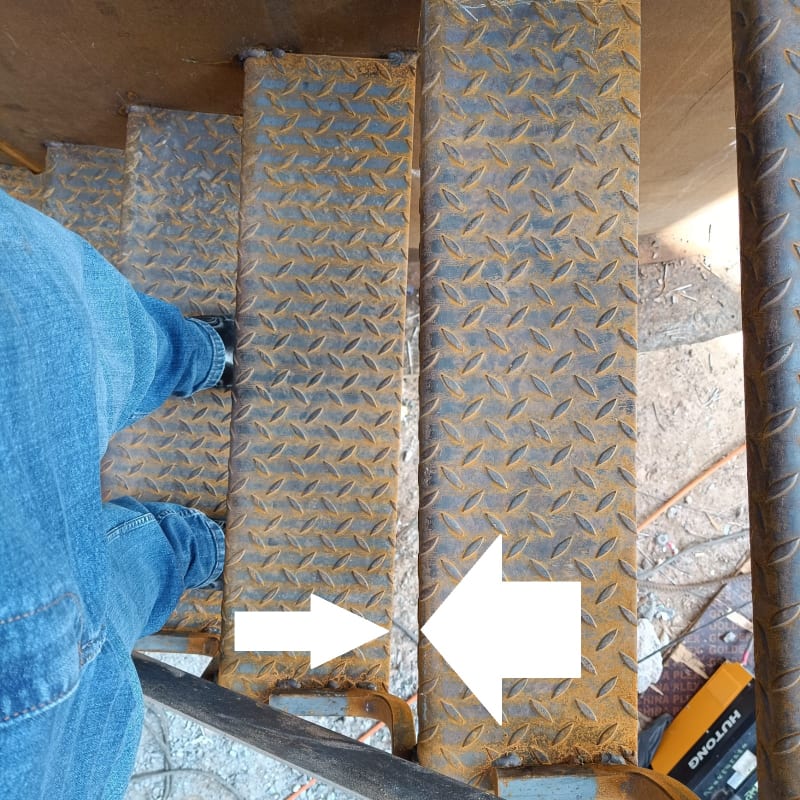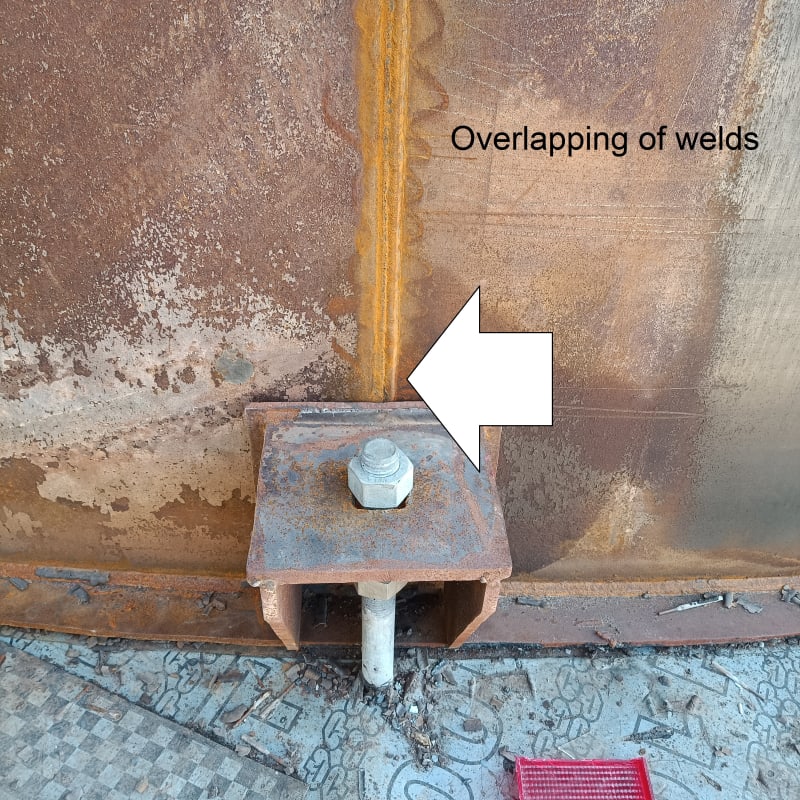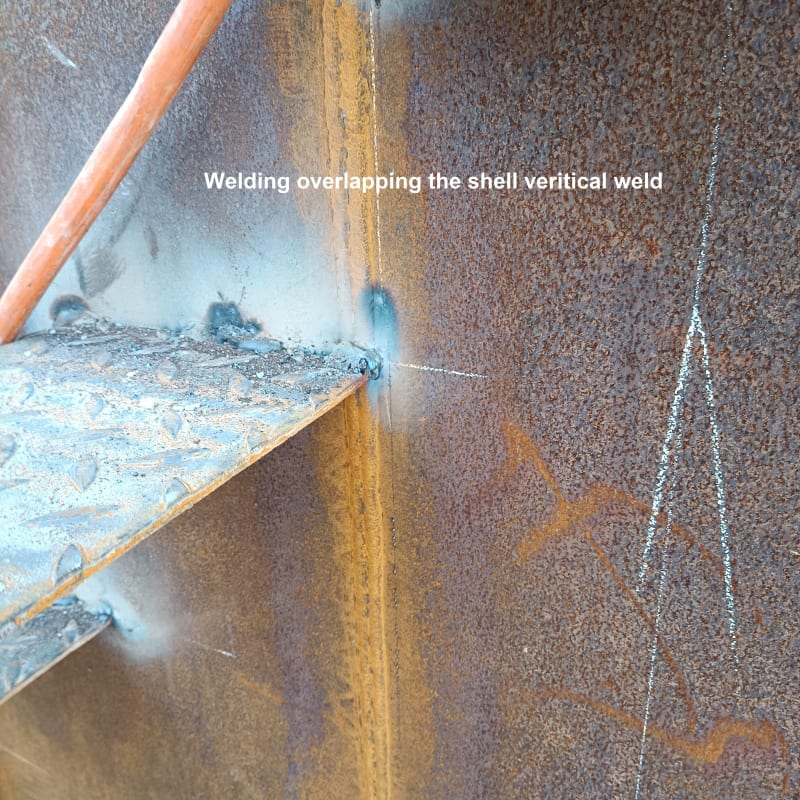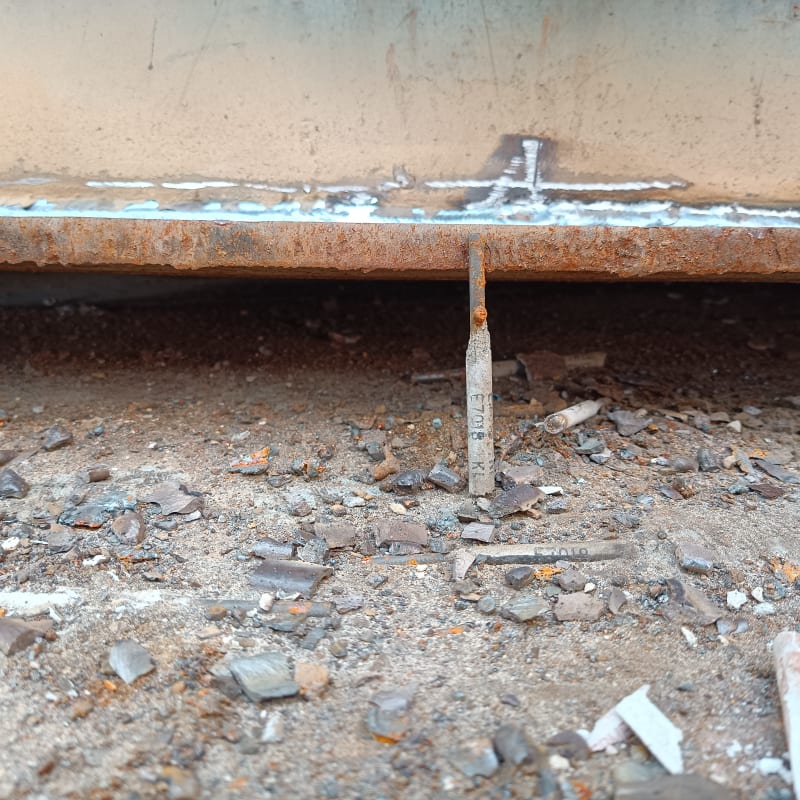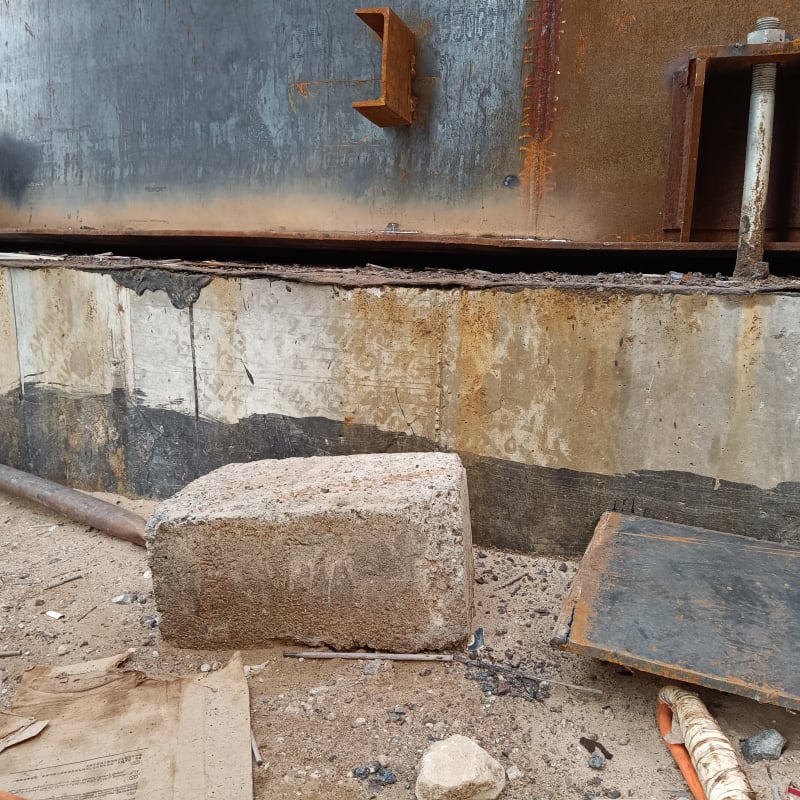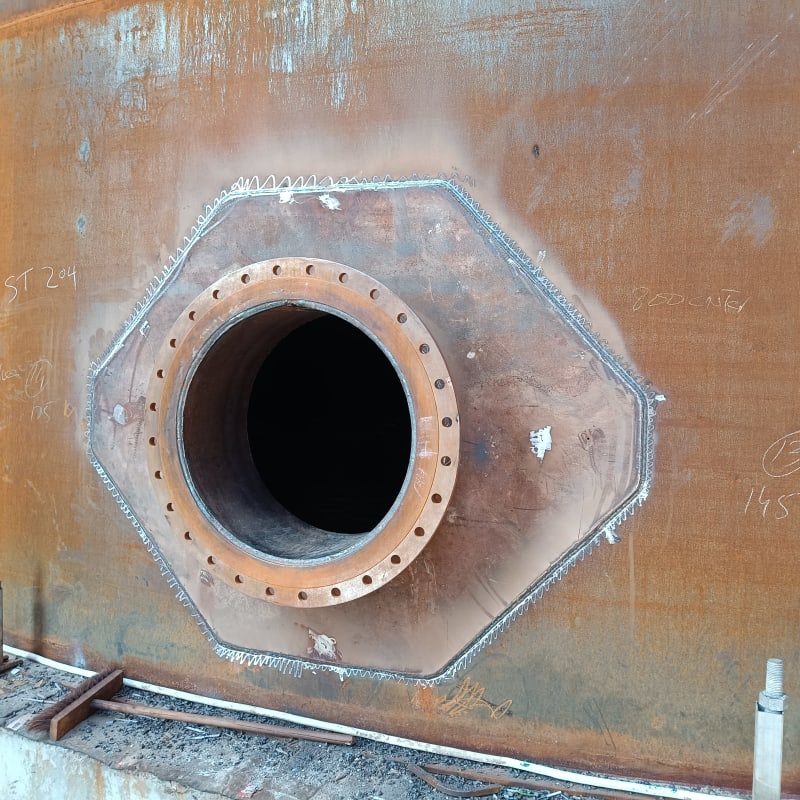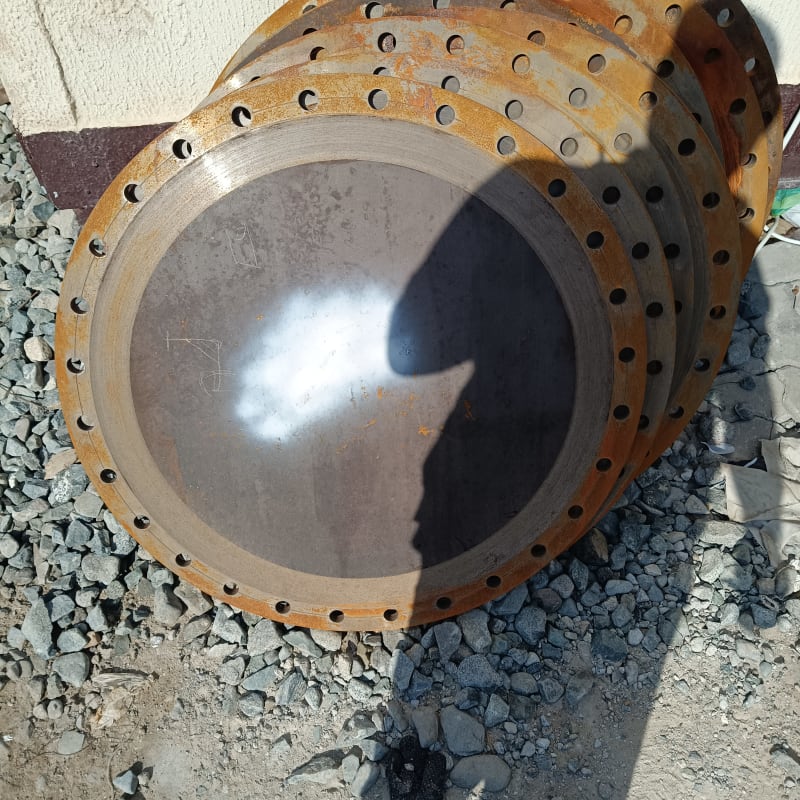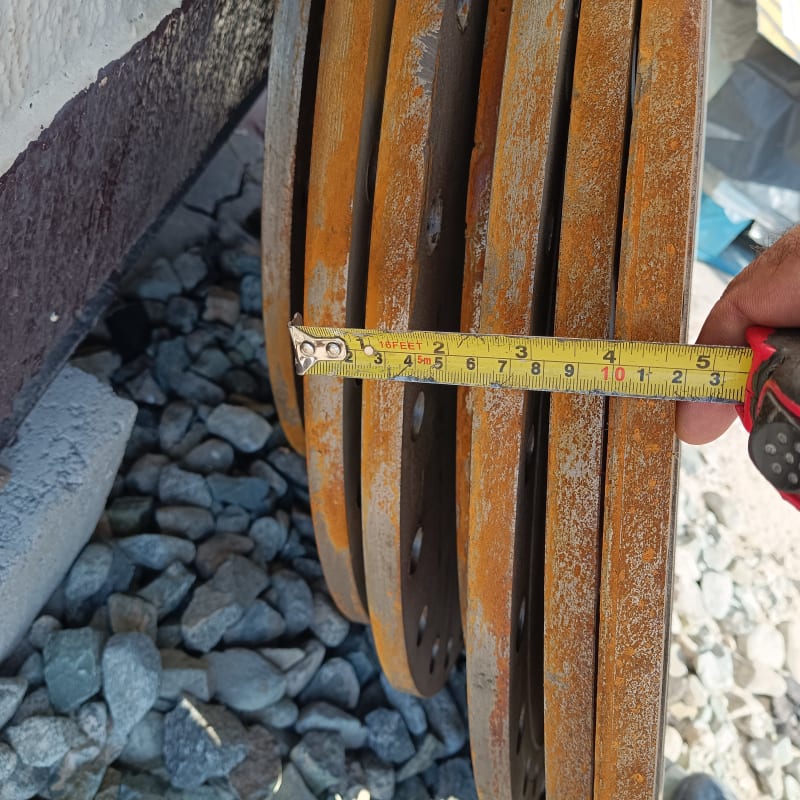If you are building an API 650 tank and the contract is for an API 650 tank, then follow API 650 unless there is some regulatory or contractual stipulation to use another standard or code. There is no engineering reason to exceed API 650. A manway cover plate will never see pressures higher than the maximum liquid height, its thickness is governed by the stiffness needed to not leak at the bolts. There is typically no engineering reason to use 46mm cover plates if API 650 says 18mm is the correct thickness unless the tank design parameters require it. The API minimum thickness is dependent on the tank height, product density, required corrosion allowance, maximum design temperature if the tank is heated, if there will be a penetration in the manway cover plate (mixer, nozzle, etc) and if a hard gasket material is specified. See API 650 Table 5.3 for standard thickness, 5.7.5.4 for guidance on hard gaskets and 5.7.5.7 to adjust the thickness of the flange and cover if there will be a mixer. An MDMT of +4C is quite high and you will have no trouble with the material toughness if it is A36, but I would check the MDMT because a +4C MDMT suggests a lowest one-day mean temperature of about +12C which puts this tank in a very warm climate. Did the tank vendor supply approval drawings, were they reviewed by a storage tank engineer familiar with API 650? Another (3) comments from the pictures: (1) eight manways on one tank (???), (2) the radius on the cover plates looks small - it should be 6" minimum per API 650 figure 5.7 and (3) per API 5.7.5.4 it is only required to machine finish the flange (not also the cover) but it is not a bad thing as long as the minimum thickness, roughness and flatness of the flange and cover meet or exceed API 650.

